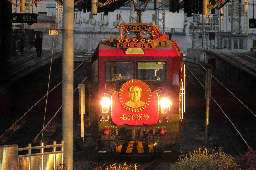Wait that's Japan? ![]()
Regardless of where it is, like half the picture is green, and chuds will see that and say thats bad
Then go on twitter and post some AI generated / 1940s magazine painting of a cottage in the forest and talk about retvrning to nature lol
That looks pretty nice actually... The buildings aren't too tall, and there's plenty of green areas between them.
Modern Chinese buildings manage both, having 30 storey buildings and green areas in between them. The area my aunt lives in in Wuhan has 5 or so towers surrounding a little communal green space with exercise equipment, children's playground, trees and flowers and a communal square. Also the ground floor of the towers generally have general stores, barbers, ping pong and mahjong tables and a pharmacist. Underground parking with a bus stop on the main street. It's pretty cool, actually. I don't think I've ever witnessed any housing that's that dense and still has a decent sense of community and character.
My grandmother, however, still lives in an old ass brutalist apartment complex with just a (relatively) large communal rec room in the middle with just ping pong tables and old timers chain smoking indoors while playing Chinese checkers. There used to be more than half a dozen trees but as people started owning cars, most of them were cut down for a parking lot.
The difference between housing built in the 80's and last decade is night and day.
The buildings aren't too tall
If the buildings aren't massive skyscraper housing blocks, don't invite me to socialism (jk jk)
looks like the sand on the right might even be easy beach access for the residents.
BRB moving to Japan and buying 3 apartments. They're practically giving them away for free!
I have actually seen whole apartment buildings with like 8 units going for ~$200,000
Is that in the city or countryside? The countryside population of Japan is shrinking, so it would seem natural.
Those perfectly maintained roads and lawns are a dead giveaway this isn't "Soviet housing".
And while the houses do look quite drab, I bet this is a village or suburban area, but until recently we have had these all over capitals.
While it's true Soviets didn't commonly keep lawns like this, roads in the USSR were pretty decent for most of its existence, mainly due to the fact that at the height of the Soviet Union (mid 1970's), less than 1% of households (not less than 1% individuals, less than 1% of entire households) owned a car, and less than 15% of long distance transport of goods was transported via road. This isn't even talking exclusively about trans-siberian shipping, either. Cargo from Novgorod to Leningrad, 180km, were shipped via train exponentially more than road.
The roads didn't really start deteriorating until cars started being produced and given to the populace en masse, towards when the mid to late 80's when the Union was having financial troubles, so between post WWII reconstruction and the late 80's, the roads were in pretty good condition.
the height of the Soviet Union (mid 1970's), less than 1% of households (not less than 1% individuals, less than 1% of entire households) owned a car, and less than 15% of long distance transport of goods was transported via road.
We need to go back
The foundations laid by the Soviets in mass public transport in Moscow in the 60's and 70's outshines the vast majority of US cities in 2024.
The sudden burst of car ownership took a massive toll on roads that were in no way designed for such things. A large portion of the western parts of the Soviet Union experience four distinct seasons, too. Huge swings in temperature between summer and winter as well as moisture levels ranging from not raining for weeks on end to almost flooding. It's no wonder why they turned to shit, esp as the USSR was running low on money.
I mean, good to know that the roads were good until they started to be used for their intended purpose. Unfair comparison, imo, because I bet the roads on the picture are used by cars quite regularly.
But fuck cars, still.
Mass car transit wasn't their intended purpose. They were meant to be a small go-between for local use, not the primary method of transit. Which was part of the problem when people wanted to Westernize the country without access to super-exploitation.
Except they were used for their purpose. The fact that individual households did not have their personal cars doesn't mean that they were not used. In case this concept is alien to you, the USSR had public transport.
You can also walk, bike, and ride horses on roads. At least if there aren't many cars around.
The roads intended purpose was for public transport, business use vehicles, emergency vehicles and bicycles. They simply were never designed for the exponential increase in wear and tear. Like no-one involved in planning expected car ownership going from 1% of households to like 40% within a decade.
They would have built them sturdier to begin with if they expected heavy traffic regularly. It happened to China too, when we shifted from bicycles to personal cars, although it's getting better again with mass transit infrastructure being the focus of this century so far.
There's more green there than I saw in Manhattan outside of Central Park
I am sick of feeling claustrophobic in my own home because land is a premium and I have to drive everywhere because having four inefficient walls and tiny yard to yourself that you never have time to enjoy without busywor is so important.
We must build up and deep into the earth with vast glorious metros that feel like cathedrals.
IDGI, what’s depressing that about that? Green space alone is pretty bloomer compared to most American cities.
that can't be soviet, there's decoration on the end of the building

















